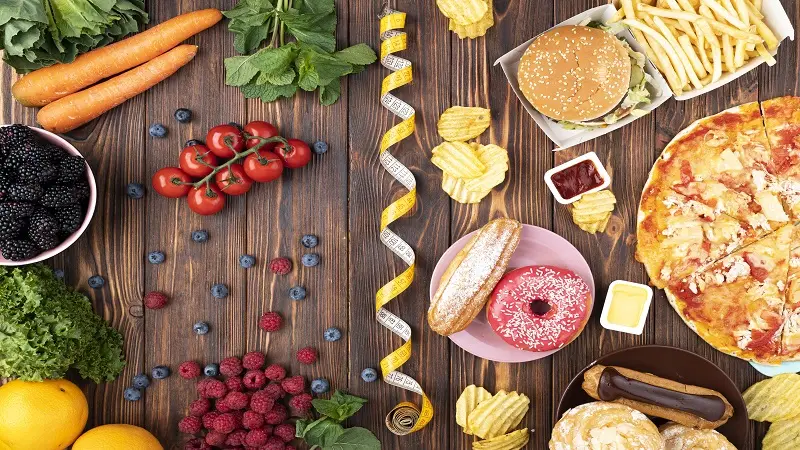The global food landscape is in a state of constant flux. New technologies, shifting consumer values, and the urgent need for sustainability are reshaping what appears on plates and in grocery carts. This article explores the major directions behind modern eating habits and business responses framed around the food trends fhthopefood and gives practical guidance for consumers, restaurateurs, and food entrepreneurs.
Why food trends matter
Food trends reveal more than flavor fads: they signal cultural values, technological advances, and economic shifts. Understanding these trends helps consumers make healthier and more ethical choices, and helps businesses anticipate demand, reduce waste, and create competitive menus.
Major trends to watch
1. Plant-forward and flexitarian diets
Interest in plant-based eating continues to grow, not only among strict vegetarians but also among flexitarians, people who reduce meat for health or environmental reasons. Restaurants are expanding vegetable-centric dishes that emphasize texture and umami, while manufacturers create plant-based proteins with improved nutrition and mouthfeel. If your goal is to tap into a broad market, prioritize satisfying plant-forward options that feel indulgent, not like deprivation.
2. Sustainability from farm to fork
Sustainability is more than a buzzword. Consumers want transparency about sourcing, fair labor, and carbon footprint. Expect more regenerative agriculture claims, packaging innovations (reusables, compostables), and traceability tools powered by blockchain or QR codes. For brands, authenticity matters: small, measurable sustainability wins beat vague greenwashing.
3. Health beyond calories: microbiome & functional foods
People now want foods that actively support well-being: fermented items for gut health, adaptogens for stress resilience, and fortified snacks for targeted benefits. Functional ingredients are moving from supplements into mainstream products, think probiotic beverages, fiber-rich convenience foods, and snacks with added vitamins or botanicals.
4. Technology and convenience
Meal kits, ghost kitchens, and AI-powered menu personalization are transforming how food is produced and consumed. Food delivery will continue to evolve with micro-fulfillment centers and smarter logistics, while in-store tech like smart fridges and checkout-free experiences change retail. Technology also helps reduce waste through predictive ordering and inventory optimization.
5. Global flavors and culinary mashups
Cross-cultural inspiration keeps menus exciting. Expect deeper dives into regional cuisines, West African spices, Central Asian flatbreads, and Southeast Asian street-food techniques often reinterpreted for local palates. Chefs and brands that respect culinary roots while offering accessible formats will find eager audiences.
How restaurants & food businesses should adapt

-
Menu agility: Rotate seasonal, plant-forward items and test limited-time offerings to respond quickly to demand.
-
Traceable sourcing: Use clear labels and storytelling; customers want to know the origin of their food.
-
Waste reduction: Implement portion control, composting, and inventory software to save costs and appeal to eco-conscious customers.
-
Digital presence: Invest in delivery partnerships, an efficient online ordering interface, and marketing that highlights unique value (health, origin, sustainability).
Consumer guide: smart eating in an era of choices
-
Read beyond headlines: Look for ingredient lists and certification logos to verify sustainability and health claims.
-
Try incremental changes: Move toward a flexitarian approach by swapping meat for legumes a few times a week.
-
Embrace diversity: Sample regional foods and fermented products to broaden your palate and microbiome.
-
Plan to reduce waste: Shop with a list, store food properly, and repurpose leftovers.
Product development ideas that resonate
-
Comfort meets health: Indulgent textures with balanced nutrition (e.g., fortified ice creams with probiotics).
-
Hyper-local offerings: Small-batch items showcasing local producers and reducing transport emissions.
-
Convenient functional foods: Grab-and-go items with clear functional benefits (energy, focus, sleep support).
-
Experience-driven formats: Meal kits, DIY fermenting kits, and interactive dining events that teach culinary skills.
Marketing that works today

Authenticity wins. Use clear, specific messaging (e.g., “100% regenerative-sourced oats”), share stories of farmers and suppliers, and show measurable sustainability outcomes. Visuals should highlight real people and real ingredients rather than stock imagery.
Challenges and ethical considerations
-
Greenwashing risk: Claims must be verifiable. Invest in third-party certifications where possible.
-
Access and equity: Many healthful or sustainable options remain expensive. Businesses and policymakers should prioritize affordability and accessibility.
-
Cultural sensitivity: When borrowing from global cuisines, respect cultural origins and give credit where due.
Practical tips for small producers and startups
-
Start lean: Validate demand with pop-ups or farmers’ markets before large investments.
-
Partner locally: Collaborations with nearby farms, co-packers, or ghost kitchens reduce cost and increase authenticity.
-
Track impact: Measure waste reduction, energy use, and sourcing metrics; customers respond to data-backed claims.
-
Focus on storytelling: A compelling founder story and clear product purpose help small brands stand out.
Conclusion
The future of food blends taste, technology, and values. From the rise of plant-forward plates and functional ingredients to delivery innovations and sustainability demands, the rules of the food game are changing quickly. Whether you are a chef, an entrepreneur, or an informed diner, staying adaptable and transparent will be key. Embrace experimentation, prioritize measurable sustainability, and keep consumers’ well-being at the center; that’s what lasting food trends are made of.
